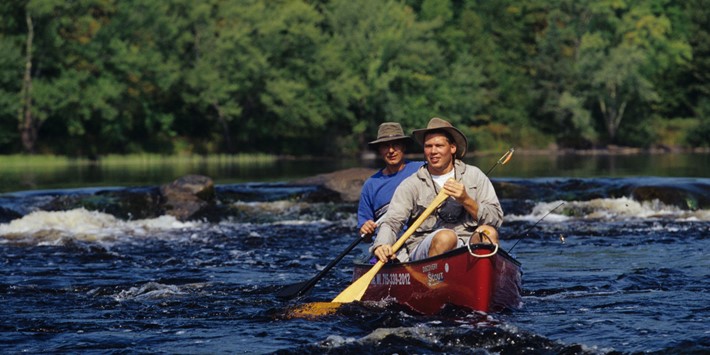
Best Places to Fish in Wisconsin: Turtle-Flambeau Flowage
The wild and wonderful Turtle Flambeau in northwestern Wisconsin, preserved by the state, is considered a mecca to both land and water recreation. Walleye are the dominant species most often targeted, but smallmouth bass and elusive 50-inch trophy muskie are sought out as well.
The flowage was created in 1926 when the Chippewa and Flambeau Improvement Company constructed a dam on the Flambeau River. The dam flooded 11 natural lakes and formed an impoundment of 14,326 acres. In 1990, the State of Wisconsin purchased 12,000 acres of surrounding land, 114 miles of shoreline and 195 islands.
The outstanding wilderness aesthetics are a major attraction. The Turtle-Flambeau Flowage is managed by the Wisconsin Department of Natural Resources to protect the plant and wildlife communities and preserve its scenic qualities. The flowage has the highest number of bald eagle, osprey and common loon breeding pairs of any Wisconsin lake. Shore birds and migratory waterfowl use the flowage as a breeding and staging area.
The Wisconsin DNR allows primitive camping for free on a first-come, first-served basis at designated sites, all only accessible by water.
Anglers and boaters should be aware of the many unmarked shallow rock bars and submerged stumps that can cause navigation problems. Floating wood is always a consideration for navigation.
Interactive Lake Map
For a more detailed lake map and up-to-the-minute fishing reports, follow the Turtle-Flambeau Flowage waterway page on Fishidy.
Here are some tips for locating and catching fish on Turtle-Flambeau Flowage:
- Spring fishing for walleye on the Turtle-Flambeau Flowage is concentrated at the inlets of the Turtle (downstream of the refuge zone) and Flambeau rivers (Murray Landing area). Walleye move to the rock and gravel bars or into shallow bays adjacent to the old river channels, with the 2-to 8-foot depths being most productive.
- Be aware of wind direction on the Flowage. Accomplished guides recognize that fishing windward shores is a key to catching walleye. Additionally, a good wind, often in a southerly or southwesterly direction, allows anglers to drift large regions. Drifting is an important component of summer walleye success.
- The best smallmouth bass action occurs from mid-May to mid-June during the catch-and-release season. Shallow, rocky areas around islands and shoreline points are key. Shallow bays that have a combination of stumps and scattered rocks can also provide excellent early season action. Shallow-diving crankbaits, such as Rapalas, Husky Jerks and Rogues, are effective in locating active fish.
- During late summer and fall, the most consistent smallmouth bass action is found in depths greater than 10 feet. Vertical jig the deep stumps and rocks with jig and live bait combos. A 1/16-or 1/8-ounce jig and nightcrawler combination can be effective under cold front conditions.
- By late summer and throughout the fall season, look to the river channels, steep drop-offs and old lake basins to provide trophy muskie opportunities. Depthfinder usage and electric motors are important in positioning for casting diving crankbaits. Due to the abundance of submerged wood, drifting live bait rigs along bottom is not advised.
 Fishidy.com is the premier map-based, social network for anglers. The online community gives anglers the ability to record and track their on-the-water experiences and view detailed fishing maps on over 8,000 bodies of water.
Fishidy.com is the premier map-based, social network for anglers. The online community gives anglers the ability to record and track their on-the-water experiences and view detailed fishing maps on over 8,000 bodies of water.










